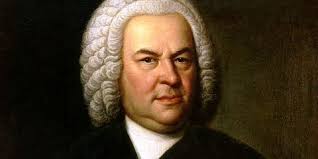Among the most iconic and instantly recognizable pieces of classical music ever composed, Toccata and Fugue in D minor, BWV 565, by Johann Sebastian Bach, has fascinated audiences for centuries. With its dramatic opening, intricate fugue, and powerful organ timbre, this work has become synonymous with gothic cathedrals, classic horror films, and the grandeur of Baroque music.
But behind the fame lies a fascinating and, at times, mysterious history.
Origins and Attribution
Toccata and Fugue in D minor is believed to have been composed in the early 1700s, likely between 1704 and 1707, when Bach was still a young man, possibly in his early twenties. At the time, he was working as an organist in Arnstadt, Germany. It is generally assumed that he composed this piece for the organ of the New Church (Neue Kirche), which was newly installed and offered him a suitable instrument to showcase his virtuosic abilities.
However, the exact date and even the authorship of the piece have long been debated. The only surviving manuscript is a copy made by Johannes Ringk, a student of one of Bach’s pupils, and no autograph (original) manuscript in Bach’s own hand has ever been found. This has led some musicologists to question whether the piece was truly written by Bach, or whether it might be the work of another composer in his circle.
Structure and Style
The composition consists of two distinct sections: a Toccata, which serves as a free-form, improvisatory prelude, and a Fugue, which follows a strict contrapuntal form.
The Toccata is known for its dramatic flair and explosive opening motif — a descending D minor scale followed by a flurry of arpeggios and bold chords. It immediately commands attention and sets a theatrical tone.
The Fugue then develops a short, rhythmically distinctive subject, weaving it into a complex and tightly constructed counterpoint. The music builds intensity as the subject is introduced, developed, and transformed through multiple voices, showcasing Bach’s genius in polyphonic writing.
Rediscovery and Popularity
For much of the 18th and 19th centuries, Toccata and Fugue in D minor remained relatively obscure. It was not until the 19th century, during the Bach revival movement spearheaded by Felix Mendelssohn, that the piece began to gain popularity. Mendelssohn’s performance of other Bach works, and the broader Romantic era interest in expressive and dramatic music, helped draw attention to the composition.
Its modern fame, however, was cemented in the 20th century, particularly thanks to its use in film and media. Perhaps most famously, it was featured in the 1940 Walt Disney film Fantasia, where Leopold Stokowski’s orchestral transcription gave it a new level of grandeur and spectacle. The piece has since become a staple in horror and suspense films, often used to evoke mystery, the supernatural, or a sense of gothic drama.
Legacy
Today, Toccata and Fugue in D minor is one of the most performed and recorded organ works in the classical canon. Its striking opening and virtuosic demands continue to captivate both performers and audiences. Despite the ongoing debates about its authorship and the questions surrounding its original manuscript, the work endures as a towering masterpiece of the Baroque era.
Whether it was intended as a youthful improvisation, an organ showpiece, or something entirely different, Toccata and Fugue in D minor remains a symbol of the power, mystery, and brilliance of Johann Sebastian Bach.


No responses yet